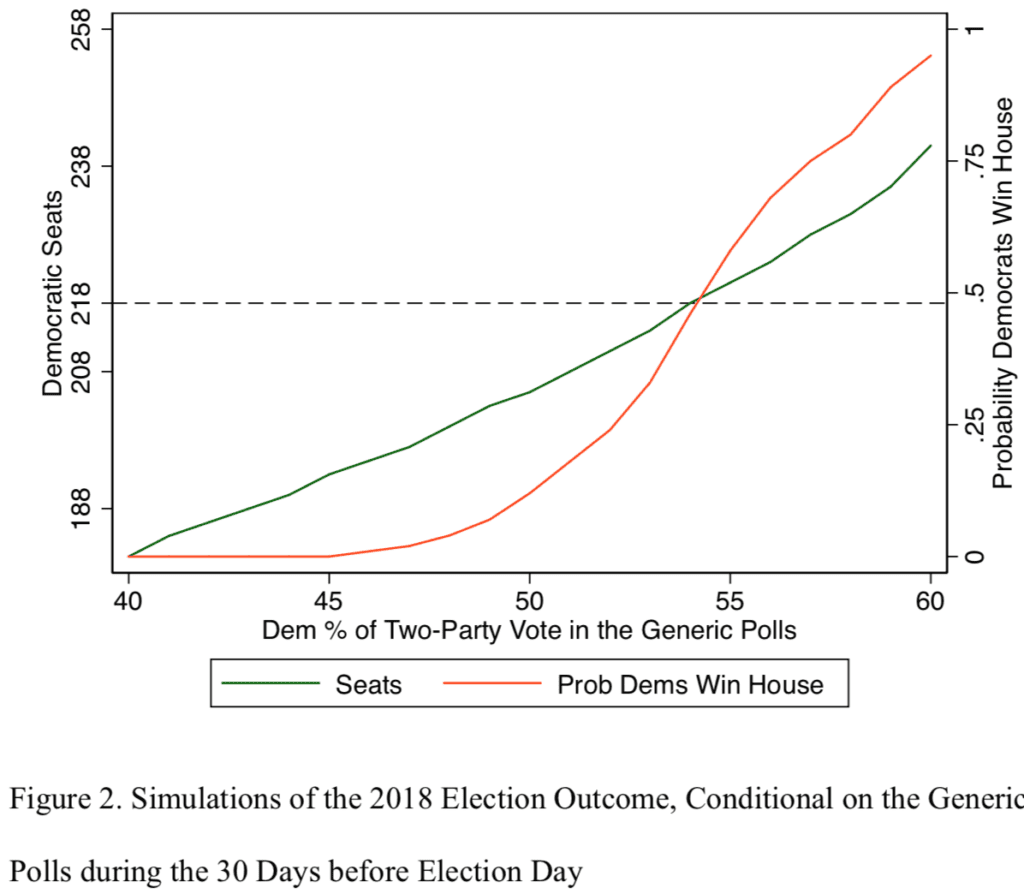
Following up on yesterday’s post on party balancing, here’s a new article from Joe Bafumi, Bob Erikson, and Chris Wlezien giving their predictions for November:
We forecast party control of the US House of Representatives after the 2018 midterm election. First, we model the expected national vote relying on available generic Congressional polls and the party of the president. Second, we model the district vote based primarily on results from 2016 and the national swing. . . . Based on our analysis, the Democrats are projected to win a solid plurality of the national vote, above 53% of the two-party share, and gain control of the House with a narrow 7-seat majority. Our simulations yield considerable variation, however, with the Republicans winning the majority of seats 46% of the time but with the distinct possibility of a big Democratic wave.
No scatterplot, unfortunately. Also, whassup with the weird y-axis labels above, huh? Anyway, if you stare at the graph long enough, the point is clear: The system is asymmetric, what we call a Republican bias in the seats-votes curve. Democrats need quite a bit more than half the votes to be assured of half the seats in the legislature.
Erikson adds:
Past wave elections have been surprisingly strong. One reason is that seats that had previously seemed safe for incumbents suddenly became endangered. Why? In the prior election, the out-party (Dems today) had not competed strongly for a seat that they could only come close to winning but not win. The combination of a wave of new support for the out party plus the out party’s renewed effort can tip the balance where incumbents had previously seemed safe enough. With a super-sized wave (bigger than observers now predict), the fallout can be enormous because gerrymandering only rearranges district lines and cannot manufacture more votes for a party. So designers of gerrymanders ignore the possibility of a 100 year flood—so their dikes are shallow. A large wave can wash away many in-party seats. I hope this analogy is clear. But as of now the generic polls do not show a super-sized wave. The central question is more modest: which party controls the House. The Democrats are favored but not certain of winning the most seats. Meanwhile, if there is the wave that people think is coming, the Senate might be more in play than people think today. A strong blue wave could probably help almost all if not all of the vulnerable Democrat Senators survive. Meanwhile the Dems could pick up 1 to 4 seats, possibly regaining a Senate majority.